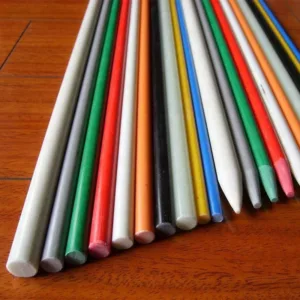Introduction
When it comes to planting trees, proper installation is crucial for their healthy growth and stability. One effective method of supporting young trees is by using fiberglass tree stakes. In this article, Unicomposite pultruded profiles will guide you through the process of properly installing 1/2 inch fiberglass tree stakes to ensure the optimal growth and stability of your trees.

1/2 inch fiberglass tree stakes
Why Use 1/2 Inch Fiberglass Tree Stakes?
1/2 inch fiberglass tree stakes are popular among gardeners and landscapers for several reasons. These stakes are lightweight, durable, and provide excellent support to young trees without causing damage. The fiberglass material is resistant to rot, decay, and rust, making it a long-lasting solution for tree support.
Tools and Materials Needed
Before you begin the installation process, gather the following tools and materials:
- 1/2 inch fiberglass tree stakes
- Measuring tape
- Wooden or rubber mallet
- Shovel
- Garden twine or soft ties
- Mulch
- Watering can or hose
Preparing the Ground
Start by selecting a suitable location for your tree. Ensure that the area has enough space for the tree to grow and receive adequate sunlight. Clear the ground from any debris, rocks, or weeds. It’s essential to provide a clean and healthy environment for your tree’s roots to establish.
Marking the Location for the Stakes
Determine the number of stakes needed for your tree based on its size and growth pattern. For most young trees, three stakes evenly spaced around the circumference will suffice. Use a measuring tape to mark the locations where the stakes will be placed.
Digging the Holes
Using a shovel, dig holes at each marked location deep enough to accommodate one-third of the stake’s length. The depth should be sufficient to provide stability and support to the tree.
Inserting the Fiberglass Tree Stakes
Take the 1/2 inch fiberglass tree stakes and insert them into the prepared holes. Ensure that each stake is placed vertically and securely in the ground. If needed, use a wooden or rubber mallet to gently tap the stakes into the soil until they are stable.
Securing the Stakes
Once the stakes are in place, secure them to the tree using garden twine or soft ties. Make sure the ties are not too tight to allow some flexibility for the tree to move with the wind. The ties should be attached at a height slightly above the midway point of the tree’s height.
Attaching the Tree to the Stakes
To attach the tree to the stakes, use additional garden twine or soft ties. Wrap the ties around the trunk of the tree, avoiding any damage to the bark. Create a figure-eight pattern between the tree and stakes, allowing the tree to sway naturally while providing support against strong winds.
Watering and Mulching
After installing the stakes and securing the tree, water the tree thoroughly. Proper hydration is vital for the tree’s establishment. Apply a layer of mulch around the base of the tree, leaving a small gap near the trunk to prevent moisture buildup and potential rot.
Regular Maintenance
Monitor the tree regularly and adjust the ties and stakes as needed. As the tree grows, you may need to reposition the ties to avoid constriction. Regularly water the tree, especially during dry periods, and replenish the mulch as necessary.
Conclusion
Properly installing 1/2 inch fiberglass tree stakes is a vital step in ensuring the healthy growth and stability of young trees. By following the outlined steps in this article, you can provide the necessary support for your trees, allowing them to thrive and reach their full potential.
Frequently Asked Questions (FAQs)
Q1: How long should I keep the fiberglass tree stakes in place? It is recommended to keep the stakes in place for at least one to two growing seasons. However, monitor the tree’s growth and stability and remove the stakes when the tree can stand on its own without support.
Q2: Can I reuse the fiberglass tree stakes for different trees? Yes, fiberglass tree stakes are reusable. Make sure to clean and inspect them for any damage or wear before using them again.
Q3: Are fiberglass tree stakes better than wooden stakes? Fiberglass tree stakes offer several advantages over wooden stakes. They are lightweight, durable, and resistant to rot and decay. Additionally, they provide excellent support without the risk of splintering or causing damage to the tree.
Q4: Can I install the stakes after planting the tree? Ideally, it is recommended to install the stakes before or shortly after planting the tree. This allows for proper alignment and prevents root damage during stake installation.
Q5: Can I use 1/2 inch fiberglass tree stakes for larger trees? While 1/2 inch fiberglass tree stakes are suitable for smaller to medium-sized trees, larger and more mature trees may require thicker and taller stakes for adequate support.




























